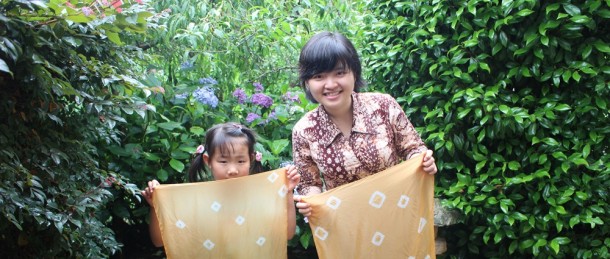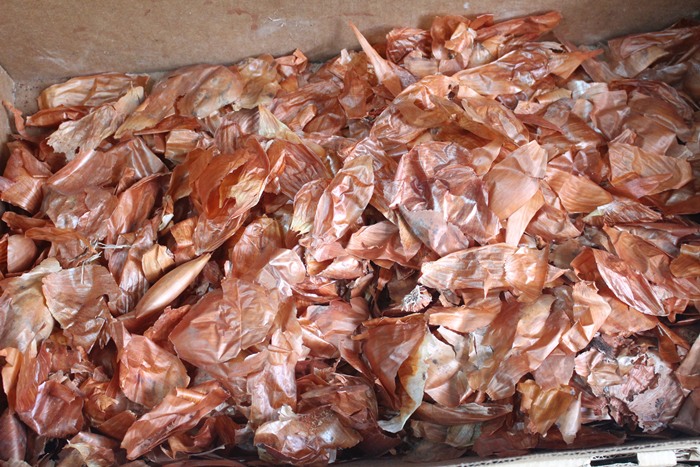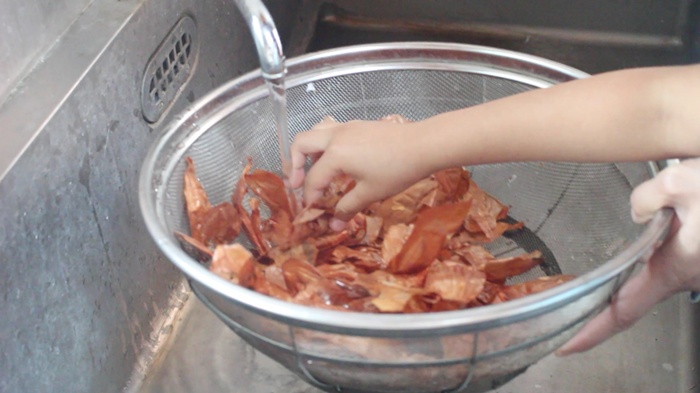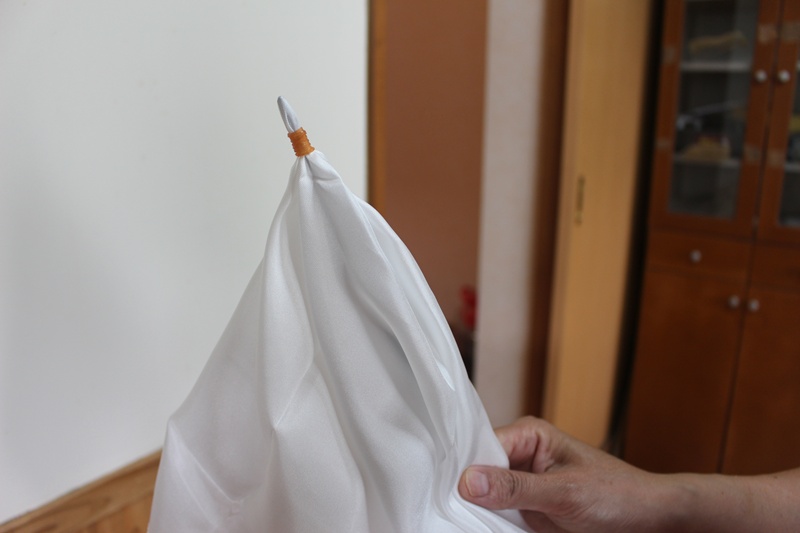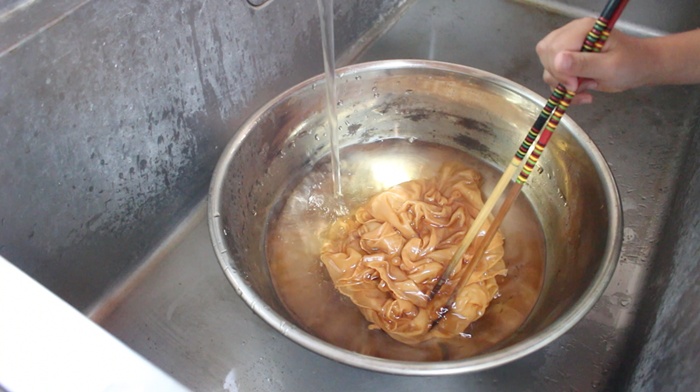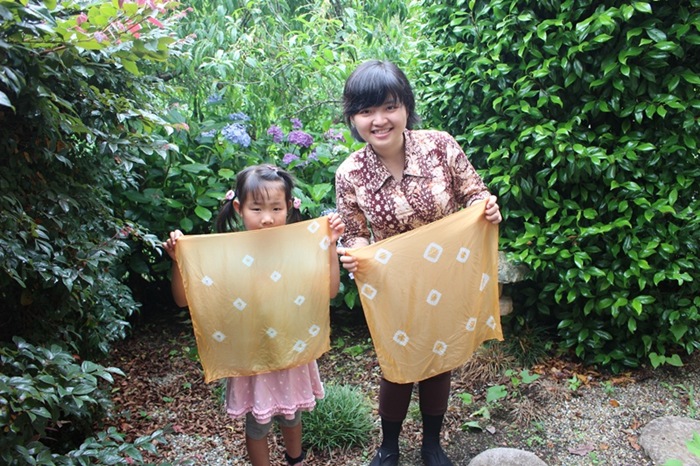Oyama no Taishō – Kusaki Zome Making
2015/07/02
Kusaki-zome making at Oyama no Taishō. Make your own silk handkerchief pattern with natural color from plants such as onion skin, tree bark, etc. Kusaki means plants or vegetation and zome means dye in Japanese. Because we use ingredients from the nature, every season the ingredients use for dyeing will be changed. For more information about the workshop schedule and seasonal ingredients, please refer to their site by clicking here. (They also have another workshop which is Konnyaku making class, Kabuto-mushi observation, and Mochi making class!)
Please click here to read the article about Oyama no Taishō mushroom harvest and mushroom restaurant too.
Ingredients for Kusaki-zome
Let’s see the ingredients for making the kusagi-zome. The fabric used for this workshop is silk. We will make some pattern like the pictures below.
For the coloring, we will use ingredients from the nature. Some of the plant you could use as dyes are onion skin, kuchi-nashi seed (Cape jasmine (Gardenia jasminoides), hinoki (Chamaecyparis obtusa), and sakura tree bark (Someiyoshino sakura or Okame-zakura). Depends on what ingredient you use, the color will vary from light yellow to deep brownish-orange. When I went there, I used onion skin with kuchi-nashi. Both of them are preferably quick to made, rather than hinoki or sakura tree bark.
Making Kusaki-zome
Before starting the workshop let me introduce you to my instructor, Akemi-san and her cute daughter, Akane-chan! They helped me making the Kusaki-zome together.
The step is pretty simple. First, we boil the water in a big bowl. While waiting for the water to boil up, we cut the kuchi-nashi seeds and wash the onion skin. Put the kuchi-nashi seeds and onion skin in the boiling water and the water will slowly turn into brown color.
We make the pattern while waiting for the water to boil. Using a single chopstick, we tie up the cloth with rubber band. Bind tightly so it will keep white when we dip it in the dye! Then slowly take out the chopstick. When the water is boiling, wash the silk with water, then we put the handkerchief in the dye made from onion skin and kuchi-nashi seed. Let it be for a moment.
After done, took the cloth, wash it one more time with clear water. Take off the rubber band and voila! The cloth are dyed and have square patterns on it. Hang it dry, but don’t hang it in a place with direct sunlight though.
Thank you for reading this article. Please come to Oyama no Taishō when you visit Japan!
-Vivi-
Information
| Title | Oyama no Taishō – Mushroom Garden |
|---|---|
| Place | Oyama no Taishō |
| Address | Kanagawa Prefecture, Odawara-shi, Nebukawa 657 |
| Admission Fee | Kusaki-zome making class : 1,400 JPY (include 600 JPY for Silk handkerchief) |
| Contact | 0465-29-1393 |
| Getting there | From Tokyo use the Tokaido line, go to Odawara station. From Odawara station took the train bound for Atami, get down at Nebukawa station (2 station from Odawara station). Then walk approx. 25 minutes (the road is steep, you can call them to pick you at Nebukawa station) By car From Seisho Bypass Ishibashi Deguchi approx. 10 minutes From Odawara Atsugi road, Odawara West Exit (Odawara Nishi Deguchi) approx. 15 minutes |
| Website | http://www7b.biglobe.ne.jp/kinokoen/access.html |
※ Please make sure the info you see is the latest in advance.

